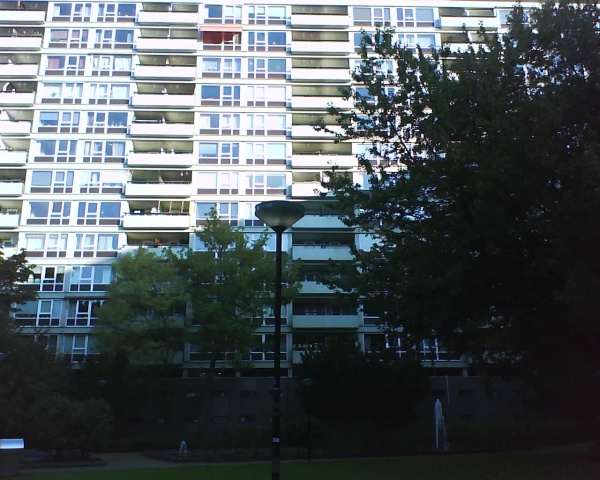Prototyping 2013-10-07 (Networked Media): Difference between revisions
(→Image) |
(→Image) |
||
| Line 15: | Line 15: | ||
== Image == | == Image == | ||
[[File:Frans Hals - Portret van René Descartes.jpg|thumbnail|[wikipedia:René_Descartes | plot therefore I am] ]] | [[File:Frans Hals - Portret van René Descartes.jpg|thumbnail| [[wikipedia:René_Descartes | plot therefore I am]] ]] | ||
<blockquote> | <blockquote> | ||
A Cartesian coordinate system is a coordinate system that specifies each point uniquely in a plane by a pair of numerical coordinates, which are the signed distances from the point to two fixed perpendicular directed lines, measured in the same unit of length. Each reference line is called a coordinate axis or just axis of the system, and the point where they meet is its origin, usually at ordered pair (0, 0). The coordinates can also be defined as the positions of the perpendicular projections of the point onto the two axes, expressed as signed distances from the origin.</blockquote> | A Cartesian coordinate system is a coordinate system that specifies each point uniquely in a plane by a pair of numerical coordinates, which are the signed distances from the point to two fixed perpendicular directed lines, measured in the same unit of length. Each reference line is called a coordinate axis or just axis of the system, and the point where they meet is its origin, usually at ordered pair (0, 0). The coordinates can also be defined as the positions of the perpendicular projections of the point onto the two axes, expressed as signed distances from the origin.</blockquote> | ||
Revision as of 11:05, 7 October 2013
![]() This page is currently being worked on.
This page is currently being worked on.
Bit
- Binary & Digital Audio Basics
- (ASCII to sound... what does this entail?)
- http://zacharydenton.com/generate-audio-with-python/
Code
- Notation and Representation
- Zooming out: Formal Languages: Procedural vs. Descriptive
Image
A Cartesian coordinate system is a coordinate system that specifies each point uniquely in a plane by a pair of numerical coordinates, which are the signed distances from the point to two fixed perpendicular directed lines, measured in the same unit of length. Each reference line is called a coordinate axis or just axis of the system, and the point where they meet is its origin, usually at ordered pair (0, 0). The coordinates can also be defined as the positions of the perpendicular projections of the point onto the two axes, expressed as signed distances from the origin.
File:Cartesian-coordinate-system.svg
Description of a folder

- Example: Description of a folder
- http://kurenniemi.activearchives.org/logbook/
What is a bit?
A little seque into the Binary...
Bit shift
The simple act of opening an audio file in a text editor (or the reverse of opening a text as a digital audio) raises many questions. What exactly is a digital representation of a text, or a sound. The fact that once digital, bits can be as easily interpreted as text or as sound, or image, or other kind of data is at once fascinating, but also deceptively reinforces an idea of multimedia as inherantly bridging and mixing together media. Media formats, and their underlying digital representations, are highly specialized codes (algorithmic, legal) involved in the related processes of encoding and decoding.
A bit shift is the process by which the bits of some data value are shifted in position either "left" or "right" (that is away from or towards the "least significant" bit position). In a simple numerical representation of integers such a shift corresponds to multiplication and division by a power of two. This as a result of the design and working of the system of binary representation, with each column defined to represent powers of 2. The same operation performed on the characters of a text represented as ASCII code values would produce a much different result as the system of representation is structured very differently (with groupings of characters organized not so much by numeric relations, but by clusters of associated symbols and the conventions of the alphabet).
Raw Media
In-class exercise
Select either to work with Image or Sound.
Use (nested) loops in Python to produce beautiful digital media exploring the bit-friendly nature of Rotterdam.
Resources
- 10 print book on early BASIC home computer programming culture
Code
- Code Specifics: Writing a Feed poller / archiver
(Based on an example Max was working on), collecting the results of a "live" feed to make an archive is a nice example of making a custom database / archive from a simple "scraper".
- Python/Code in different contexts (some examples of "pure" vs embedded vs networked uses)

